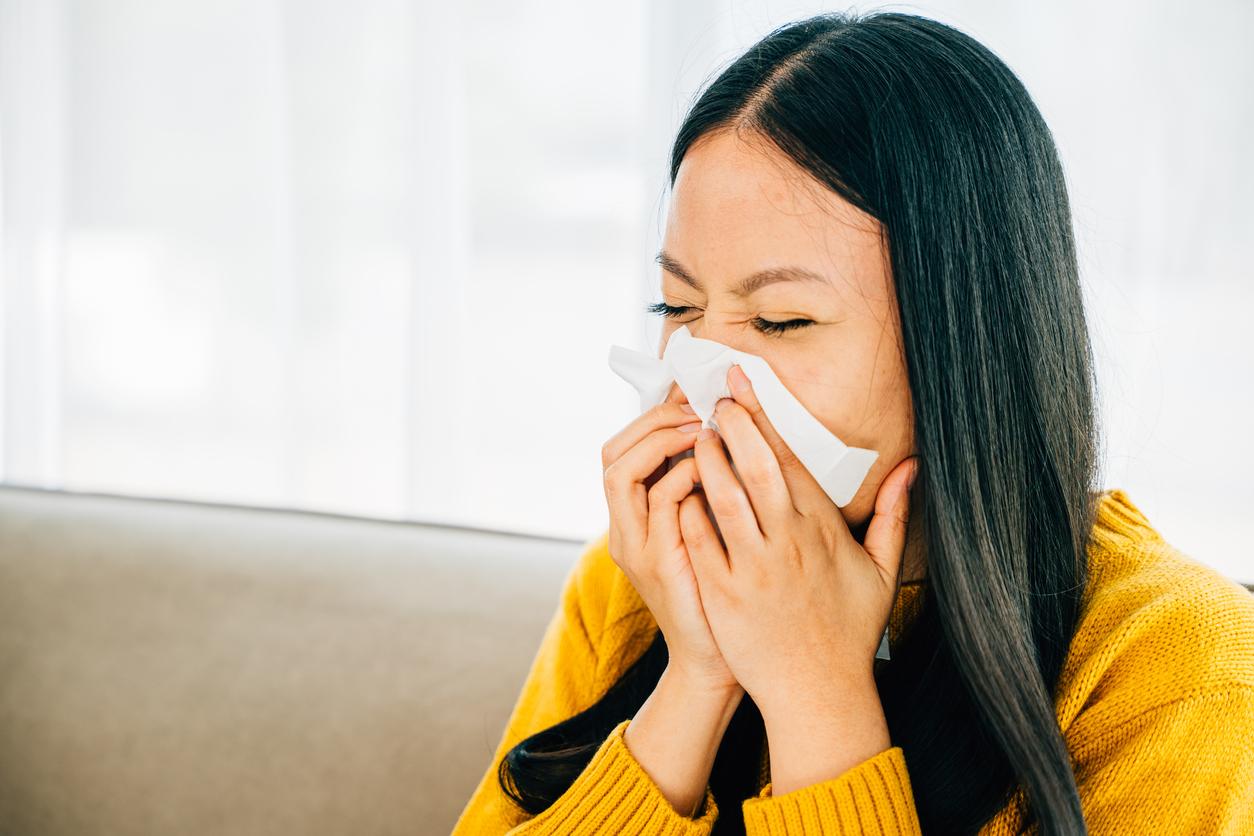Runny nose, watery eyes and cough: Pollen allergies rise with the thermometer. Researchers have succeeded in understanding their mechanism.

The beautiful days are coming back… and allergies are on the increase. For one in four French people, it’s the same story every spring: sneezing, runny nose, scratchy throat, coughing fits and watery eyes. But what causes pollen allergies? Austrian researchers explain the mechanism at work in the Journal of Biological Chemistry.
A protein stimulates the immune system
Among pollen allergies, birch pollen is undoubtedly the most well-known. It is also the one used by the team from the Medical University of Vienna (Austria) to explain how an allergic reaction works. To do this, they recreated in the laboratory the allergen present in birch pollen, the Bet v 1 protein (Betula verrucosa). It makes the immune system hypersensitive and causes the formation of pathogenic antibodies – immunoglobulin IgE – in 95% of allergy sufferers.
But until now, the reason why these proteins trigger allergies was unknown. It is now done: it is the molecular “pockets” of the Bet v 1 protein that determine whether or not the pollen will be allergenic. Like a human protein, lipocalin 2, Bet v 1 can bind firmly to iron through molecular pockets. If these pockets remain empty, the pollen turns into an allergen because it manipulates the Th3 immune cells to make them react.
Pollution linked to the growing number of allergies
We also observe in people with allergies an imbalance between Th3 cells – which defend the body from allergies and parasites – and Th1 cells – which react to bacterial or viral infections. This observation is valid for all allergies, underline the authors of the study: “The studies currently underway indicate that the principle of birch pollen can be applied directly to other allergens with similar molecular structures. As a result, we are starting to understand for the first time why allergies to pollen, food and fungal spores are on the rise, ”explains Erika Jensen-Jarolim, director of the Department of Comparative Medicine and co-author of the study.
We know that allergies are more and more frequent. Growing environmental pollution may have something to do with it, the study reminds us. “The iron load in birch protein could be linked to the degraded environmental conditions to which plants are exposed. There may even be a direct link between environmental pollution and rising allergy rates, ”the authors write. This observation even allows them to consider an evolution in the treatment of allergies. “In the future, it will be logical to deliberately load allergen molecules of the type ‘Bet v 1’ with iron in the context of immunotherapies for allergics. In this way, the treatment, which lasts two to four years, could be considerably reduced and its effectiveness improved. “
.















